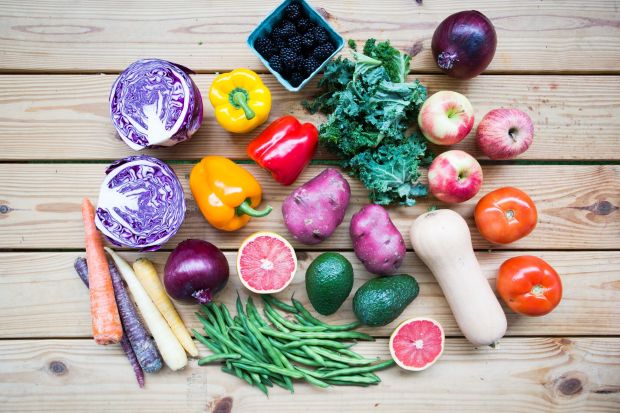Finding The Beauty In Ugly Produce

As a matter of logic, what food looks like shouldn’t matter, since humans eat with their mouths — not with their eyes. And yet — as an multitude of Instagram food pictures proves — eating, particularly in the digital era, is a visual adventure as well as a gustatory one.
While it can be fun to flip through photos of food on the web, particularly in the half hour or so before lunch, the aesthetic obsession is beginning to wear on some. A columnist at The Boston Globe, Devra First, asks readers to pity the humble stew: Though it’s delicious, richly flavored and good for any number of meal situations, it’s just not very photogenic. A good stew is mostly lumpy and brown, whereas a Unicorn Frappuccino from Starbucks is colorful and vibrant. First says that means the visually inclined consumers of the world are choosing Frappuchinos, even if its taste was most often described as a crime against humanity.
“Instagram,” she wrote, “is ruining food by making it a requirement that meals must always look every bit as good as they taste.”
Although the obsession has increased over the last few years — as a greater proportion of meals have shown up in photographs — the insistence that food must “look” right is actually as old as mass market grocery stores.
If one were to think about all the produce they’ve ever purchased at a grocery store, one might marvel at how very similar it all looks. The tomatoes are always round; the carrots are always approximately the same shape and the cucumbers are always straight and about the same size. What might surprise the average person, however, is the fact that all produce doesn’t come out of the ground ready for the grocery store shelf. The reason all produce looks so remarkably similar is not a coincidence. That’s because the fruits and veggies that don’t look the part for the typical, all-American salad never even make it the store.
In the world of grocery, misshapen fruit, bent zucchini and hugging carrots need not apply.
Well, not to a regular grocery store anyway; the team at Hungry Harvest is happy to have them on board.
A Home for Ugly Fruit
Hungry Harvest Founder Evan Lutz says the company wants to help the world innovate its way out of two problems: food waste and food insecurity.
The firm is hoping to assist the market by buying up all those “ugly” fruits and veggies as “seconds” and then selling them, along with surplus crops Hungry Harvest also purchases from farmers, via boxed delivery to customers.
Lutz has also recently started working with James Beard award-winning chef Ashley Christensen to bring more attention to the issue.
Hunger, Christensen said, is not a probelm that has to exist in the U.S., because it isn’t brought on by scarcity.
“This is not an issue that has to do with not having supply; it’s about communication and distribution,” she explained.
And it’s a service, Lutz said, that has seen a ton of demand. As it turns out, consumers are somewhat less concerned about the appearance of food, particularly if they perceive their consumption of it is helping the planet.
It’s a good service that requires little of its users. Customers can simply sign up for weekly boxes that are delivered to their homes. Boxes range in price from $16 to $50, depending on the contents produce-wise. For every box purchased, Hungry Harvest donates fresh fruit and vegetables to support the hungry.
Customers get to do good and, even better, they actually get to eat well while they’re at it.
“Ugly doesn’t mean bad, moldy or rotten, so the quality is great,” Lutz said.